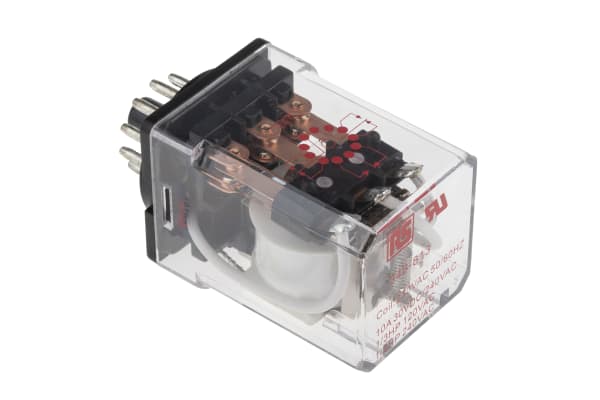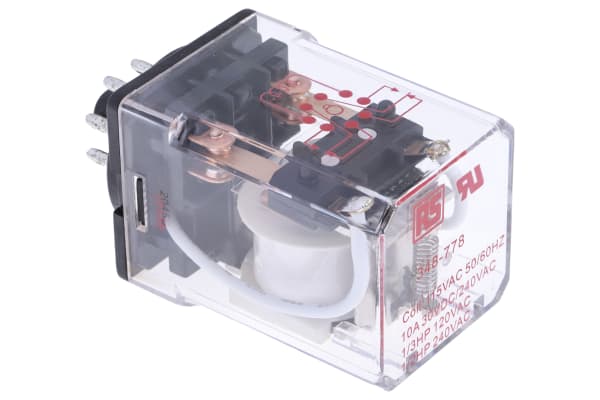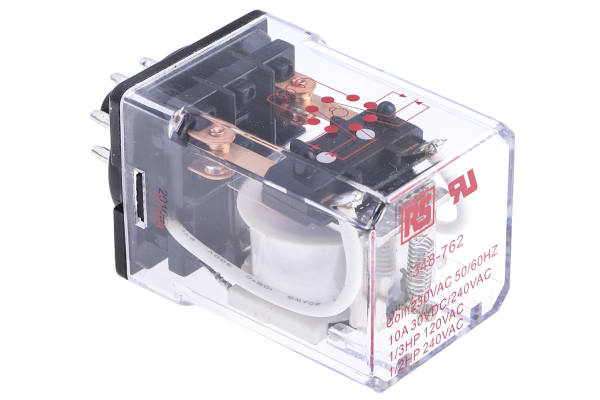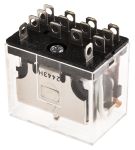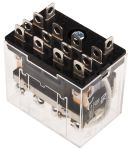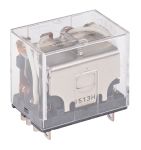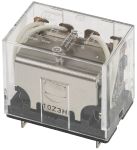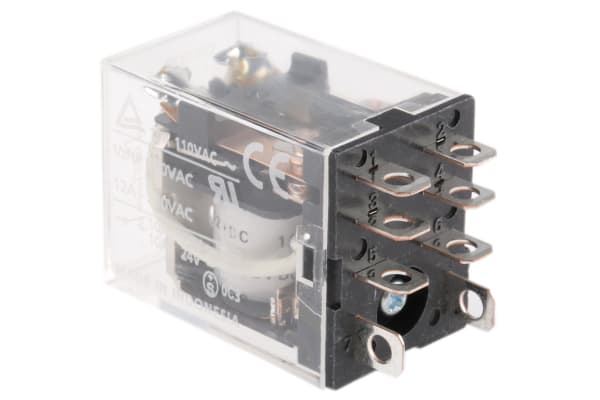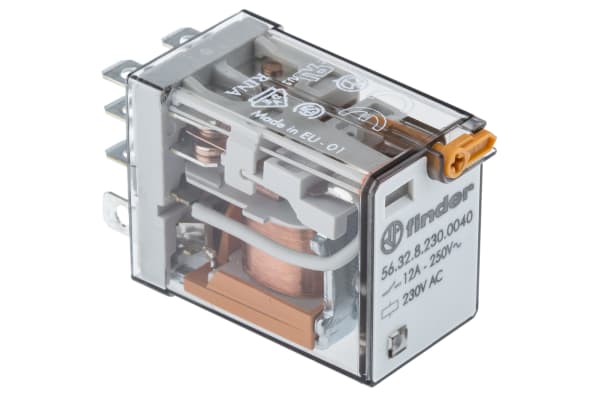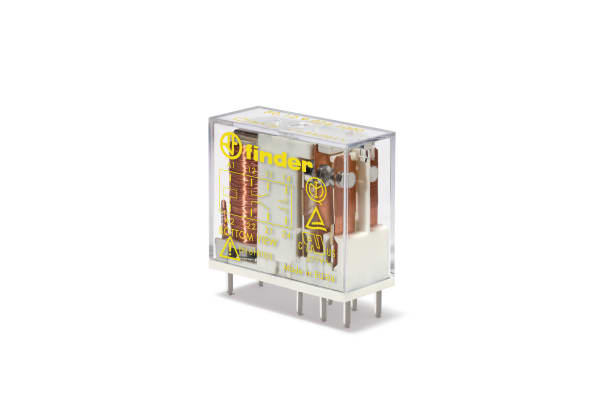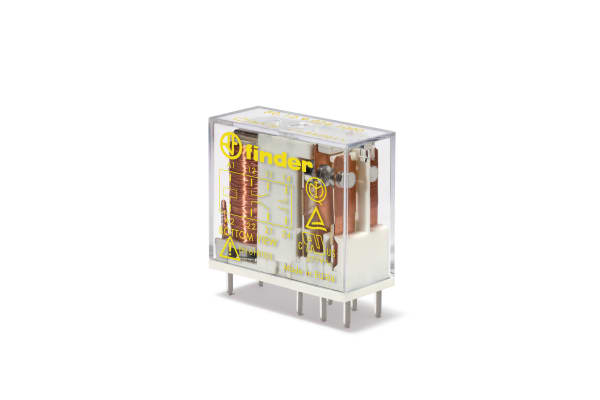Non-Latching Relays
Relays are electrical switches that are operated by electrical impulses with the primary function to open and close a circuit, they can also be referred to as industrial switches. There are 2 main types available, latching and non–latching relays.How do non-latching relays work?Non-latching relays are in a normally closed (NC) position and will stay in this state without power. When power passes through the circuit, the relay switched to a normally open (NO) position by using an internal coil to generate a magnetic force, holding this NO position. Once the current is turned off, it returns to the NC position. This makes non-latching relays well suited to push-button applications like keyboards and micro-controller input buttons.What are non-latching relays used for?Non-latching relays are highly durable and versatile components, making their performance long lasting and suitable for use in a wide range of applications, such as:Automotive enginesHousehold appliancesIndustrial machineryMedical equipmentTelecommunications equipmentWhat is the difference between latching and non-latching relays?Both types of relays in similar in design and function, however, a significant difference between them is that a latching relay will remain in the last position it when it was last powered, whereas a non-latching goes back to its normal position. This makes each more type of relay suitable for different applications. Considerations when selecting a relayWhen choosing a relay, it is important to consider a number of specifications to ensure it is fit for purpose, some factors include:Coil voltage – the required voltage to actuate the switching mechanism. If a voltage is too high this could damage the components, if it is too low then it will not actuate. Contact configuration – This is the state the contacts are in without power. For example SPST, single pole single throw.Contact material – the relay contacts are available in many materials that have certain properties. Common materials are gold, silver, tin oxide and nickel Coil power – the amount of power (watts) the coil operates at. This must match the power in the circuit for correct function. Coil resistance – the amount of resistance (ohms) in the circuit that the coil creates.
-
RS PRO, 230V ac Coil Non-Latching Relay 3PDT, 10A Switching Current Plug In, 3 Pole
IDR200,654.57 -
RS PRO, 24V dc Coil Non-Latching Relay DPDT, 10A Switching Current Plug In, 2 Pole
IDR201,808.36 -
RS PRO, 115V ac Coil Non-Latching Relay DPDT, 10A Switching Current Plug In, 2 Pole
IDR103,421.54 -
RS PRO, 230V ac Coil Non-Latching Relay DPDT, 10A Switching Current Plug In, 2 Pole
IDR196,144.30 -
RS PRO, 12V dc Coil Non-Latching Relay DPDT, 10A Switching Current Plug In, 2 Pole
IDR183,662.39 -
Omron, 24V dc Coil Non-Latching Relay DPNO, 25A Switching Current Panel Mount, 2 Pole, G7L-2A-T 24DC
IDR177,893.44 -
Omron, 230V ac Coil Non-Latching Relay 4PDT, 10A Switching Current Plug In, 4 Pole, LY4 AC230
IDR286,244.81 -
Omron, 100/110V ac Coil Non-Latching Relay 4PDT, 10A Switching Current Plug In, 4 Pole, LY4AC100/110
IDR289,811.07 -
Omron, 24V ac Coil Non-Latching Relay 4PDT, 10A Switching Current Plug In, 4 Pole, LY4 24AC
IDR292,538.21 -
Omron, 24V dc Coil Non-Latching Relay 4PDT, 10A Switching Current Plug In, 4 Pole, LY4 24DC
IDR318,970.49 -
Omron, 12V dc Coil Non-Latching Relay 4PDT, 10A Switching Current Plug In, 4 Pole, LY4-J DC12
IDR475,781.04 -
Omron, 240V ac Coil Non-Latching Relay DPDT, 10A Switching Current Plug In, 2 Pole, LY2AC220/240
IDR226,667.29 -
Omron, 110/120V ac Coil Non-Latching Relay DPDT, 10A Switching Current Plug In, 2 Pole, LY2 110/120AC
IDR176,529.87 -
Omron, 24V dc Coil Non-Latching Relay DPDT, 10A Switching Current Plug In, 2 Pole, LY2 24DC
IDR310,264.62 -
Omron, 12V dc Coil Non-Latching Relay DPDT, 10A Switching Current Plug In, 2 Pole, LY2 12DC
IDR175,376.08 -
Finder, 12V dc Coil Non-Latching Relay DPDT, 12A Switching Current Plug In, 2 Pole, 56.32.9.012.0040
IDR181,459.70 -
Finder, 230V ac Coil Non-Latching Relay 4PDT, 12A Switching Current Plug In, 4 Pole, 56.34.8.230.0040
IDR451,446.56 -
Finder, 24V dc Coil Non-Latching Relay 4PDT, 12A Switching Current Plug In, 4 Pole, 56.34.9.024.0040
IDR322,222.08 -
Finder, 24V dc Coil Non-Latching Relay DPDT, 12A Switching Current Plug In, 2 Pole, 56.32.9.024.0040
IDR198,871.44 -
Finder, 230V ac Coil Non-Latching Relay DPDT, 12A Switching Current Plug In, 2 Pole, 56.32.8.230.0040
IDR316,662.91 -
Finder 24V dc Safety Relay - Dual Channel With 2 Safety Contacts , 0 Auxiliary Contact
IDR250,477.32 -
Finder 48V dc Safety Relay - Dual Channel With 2 Safety Contacts , 0 Auxiliary Contact
IDR300,404.96



